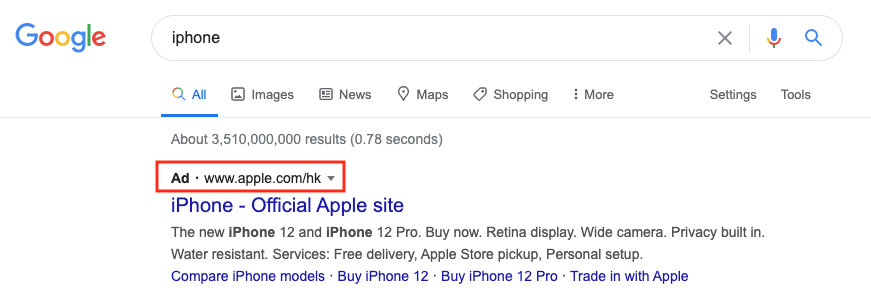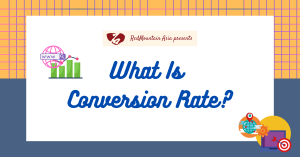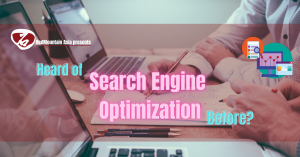An Introduction To PPC
As you might have learned from our previous blog, PPC advertising is known as one of the most commonly used strategies in the digital marketing field. To define PPC advertising (or pay-per-click advertising), it is a way of online marketing where advertisers have to pay a fee every time their ads are being clicked.
Without a doubt, PPC has a higher generation of conversion and profits in comparison to other organic tactics, like SEO (Search Engine Optimization). According to the research in 2017, PPC advertising was able to bring 50% more leads and traffic compared to organic methods. On top of that, a 2018-2019 report stated that almost 80% of marketers believe that PPC advertising is of great significance to their online business.
There is certainly nothing wrong with SEO. Working on SEO ensures your business’s website is nicely structured with optimized content, so ranking can gradually be improved along with backlink building and social media tactics. That being said, the amount of time needed for SEO to come to effect might take up to 6-12 months.
On the other hand, pay-per-click allows you to reach your target audience more quickly and directly. Therefore, if you want to see results in a short period of time and you have a sufficient amount of budgets allocated for advertisements, you should definitely go for it.
Start With a Great PPC Campaign
Before doing anything, you need a good plan and preparation – an organized PPC campaign to execute. If you are new to PPC, here are a few pointers that you can follow:
Key #1: The Intent And Offer
When people go on search engines like Google, they normally have 2 kinds of intents of either a) informational search, or b) commercial search. Obviously, informational search refers to the action of people who look for information or guidance like ‘What is a conventional oven’ or ‘How to make pizzas,’ As you can see, these searches bring an ultimate goal of getting answers to their questions.
Contrarily, the commercial search focuses on transactions. Essentially, users who do commercial searches have an intention of wanting to learn more about a product or service and eventually making a purchase of it. The most common examples of a commercial search include keywords like ‘top’, ‘review’, ‘best’, etc. Sometimes, a commercial search can also be targeting an exact branded product. For example, ‘iPhone.’

Since PPC requires advertising budgets, it is recommended that you focus on commercial intent instead of informational intent when placing one, so then you can draw attention from the audience and immediately direct those visitors to purchase the product or service you are offering.

Key #2: Keywords and Keyword Search Volume
Keyword research is of the utmost importance when doing PPC advertising because without the chosen keyword, there is nowhere to start your ads! Here are some good ways to ensure that you are making the right decision regarding your keywords:
- Be specific about what you can offer,
- Analyze the keywords used by your competitors, and
- Research on keywords through platforms like SEMrush.
One important note to bear in mind is the keyword search volume. As the name implies itself, it refers to the search volume of a keyword in a period of time. Keyword search volume is a crucial factor when analyzing keywords because it showcases the popularity and competitiveness of a certain keyword. In other words, you need to find a keyword that has a high amount of traffic to generate leads and convert to sales.
The screenshot shown below is a great example of a keyword search platform called SEMrush. As you can see, it neatly showcases both the local and global search volumes, competitiveness, cost per click, and other information, which can be a useful tool when you are trying to compare and identify the target keywords for your ads.

Key #3: Ad Quality and Landing Page
After all, the result depends on the quality of your advertisement. Without an accurate and compelling ad, you are still getting nothing regardless of how much you’ve done on keyword research and other tests.
When creating a PPC advertisement, one thing to pay attention to is keeping it simple and on point because there isn’t a lot of time or space to draw your prospect’s attention. To do so, you need to first know the core purpose of your ad – are you trying to promote a seasonal product, a new product, or some special sales combos?
If you want to lure more people to click on your link, be sure to have a unique proposition that cannot be found from someone else’s website but yours. Creating something catchy is undoubtedly a vital key.
Ad quality is important, but so is the quality of your landing page! See, the purpose of your PPC advertisement is to bring leads and create conversion. That is why when you are planning your campaign, you need to customize a landing page that conjuncts with the ad, so when people click on your link with commercial intent, they can learn more about your offer and be easily directed to check out.
The topic of a landing page brings us to the last factor – CTA (Call-to-action). Call-to-action is almost like a command of telling your audience what to do next after browsing your landing page. The Call-to-action doesn’t need to be complicated, it only needs to give your audience a final push. A very simple CTA example can be ‘Buy Now.’
Conclusion
Placing a PPC advertisement is a fast way of enhancing conversion only if the PPC campaign is effective. One key takeaway is: plan your budget wisely. You don’t necessarily need a large amount of money to run a PPC ad, but you certainly don’t want to be too stingy. A great profit takes investments, and when you are capable of converting your prospects into customers, the money you spend is minimal compared to your returns.
If you are planning to run a pay-per-click advertisement but don’t know where to start, don’t hesitate to let us know. As always, we go beyond.




